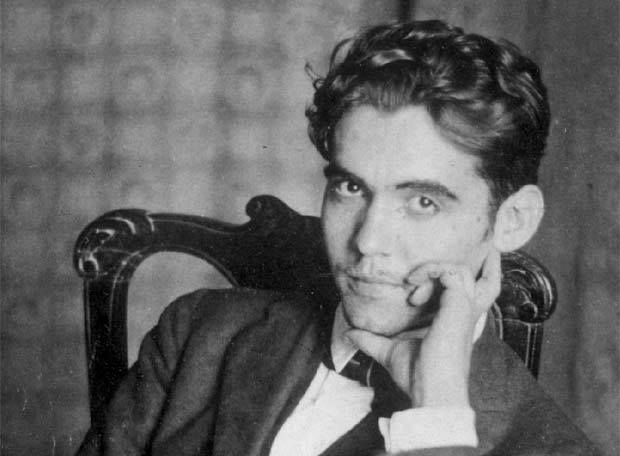“Poetry heals the wounds inflicted by reason.”
– Novalis
I REMEMBER that red paperback: slightly tattered at the edges, stealthily borrowed from my father’s bookshelves (and never returned). And the black and white portrait that gazed out from the cover — his sculpted features framed by a dishevelled wisp of dark hair; his lips parted as if he were about to speak; behind the intellectual poise of pince-nez spectacles, a glint of untamed despair escaping from his eyes. It was the face of the first poet I fell in love with: W.B. Yeats.
At the age of 15, through the melodramatic throes of adolescent angst, I carried that book with me everywhere. Yeats’ lines lured me to other worlds, away from the ‘unbearable emptiness’ of everyday life in suburban Kuala Lumpur. In songs of primordial yearning, Yeats beckoned me to follow him. I was especially haunted by the refrain in his early poem, ‘The Stolen Child’:
Come away, O human child!
To the waters and the wild
With a faery, hand in hand,
For the world's more full of weeping than you can understand.
When (to my delight) we formally studied Yeats in literature class – with close readings of ‘An Irish Airman Foresees his Death’, ‘The Lake Isle of Innisfree’, ‘The Second Coming’, and his political masterpiece ‘Easter, 1916’ – I came to understand and love Yeats’ grappling with the temporal world as much as his invitations to sail to a mythological landscape. Years later, Yeats’ poem ‘The Dawn’ became the first poem I would translate into Malay, with the title ‘Fajar’.
Another poet I read voraciously as a rebellious teenager was the ‘enfant terrible’ French symbolist, Arthur Rimbaud. My twin sister and I were led to the iconoclastic Rimbaud through the music of Jim Morrison, the tempestuous genius frontman of The Doors. Morrison had been deeply influenced by the raw power of Rimbaud’s language and his embodiment of the poet as a fearless rebel and experimenter: “The poet makes himself a visionary through a long, boundless and systematised disorganisation of all the senses.” Rimbaud’s call for the poet to experience “all forms of love, of suffering, of madness”, to “attain the unknown” even at the risk of destroying himself “in his ecstatic flight through things unheard of, unnameable” was exhilarating, intoxicating, and dangerously seductive.
.jpg)
As a university student in New York, I encountered another love – the legendary poet and playwright of Granada, Federico Garcia Lorca. A modernist who, among other things, drew inspiration from the gipsy oral traditions of his native Andalusia, Lorca was shot by Franco-regime militia at the age of 38, his body left in an unmarked grave. In 1929, Lorca had visited New York and wrote a series of poems during his year-long stay, posthumously collected and published in a volume entitled ‘Poet in New York’. Lorca captured powerfully for me the surreal waking dream of the city I once called home. In ‘Sleepless City (Brooklyn Bridge Nocturne)’, Lorca begins with the lines:
Out in the sky, no one sleeps. No one, no one.
No one sleeps.
Lunar creatures sniff and circle the dwellings.
Live iguanas will come to bite the men who don’t dream,
and the brokenhearted fugitive will meet on street corners
an incredible crocodile resting beneath the tender protest of the stars.
It was Lorca, too, who tore open my senses to the eroticism of poetry. His embrace of Andalusia’s Moorish heritage and his adaptation of the Arabic-Persian ‘ghazal’ and ‘qasidah’ as a lyric form resulted in Lorca’s masterful collection, ‘Divan del Tamarit’, consisting of nine gacelas and 12 casidas. The first poem, ‘Gacela of Unforseen Love’, left me breathless (even in translation) through its earthy imagery and heady rhythms.
No one understood the perfume, ever:
the dark magnolia of your belly.
No one ever knew you martyred
love’s hummingbird between your teeth…
One of the irreplaceable joys of poetry is the subterranean passages of connection through which poets reveal themselves to be discovered. Lorca inadvertently led me to the great Alexandrian poet Constantine Cavafy, who led me to the poetry of Sappho. An ancient Greek woman poet whom Plato hailed as ‘The Tenth Muse’, Sappho’s lyrical invocations of Eros and Aphrodite still feel contemporary today:
Again love, the limb-loosener, rattles me
bittersweet,
irresistible,
a crawling beast.
Poetry draws unexpected lines of association, across time, space, culture, and language. I was reminded of Sappho’s fragments of female desire as I translated the poem ‘Eros’ by the German Expressionist poet, Else Lasker-Schüler:
And all the suns sang fire songs
And my limbs
Were like
Lilies gone astray.
Other women poets of my personal pantheon: the Russian poet Anna Akhmatova, the Argentinian poet Alejandra Pizarnik, and the Iranian poet, Forough Farrokhzad, who wrote of the quotidian with bold yet subtle sensuality: “Life is perhaps lighting up a cigarette/ in the narcotic repose between two love-makings.”
What is it, then, about poetry that moves us beyond ordinary speech and prose? Poetry is a way of saying what cannot be expressed otherwise, a linguistic vessel that gives life to the ‘unsayable', a primal art that confronts, and at times transcends, the limits of language itself. In its endless variations of form and anti-form, poetry embodies the liturgical incantations of prayer (secular and sacred), the collective rage of protest, the pleasure of play, the intimacy of love and longing, the unnameable emotions of loss and despair — in short, the vastness and depth of human experience.
Other women poets of my personal pantheon: the Russian poet Anna Akhmatova, the Argentinian poet Alejandra Pizarnik, and the Iranian poet, Forough Farrokhzad, who wrote of the quotidian with bold yet subtle sensuality: “Life is perhaps lighting up a cigarette/ in the narcotic repose between two love-makings.”
Bordering on silence and held by time, poetry approaches the art of music more than other forms of writing. Resisting the urge to define what poetry is, some poets have attempted to illuminate the mysteries of poetry by describing what it is not, or what it does. Yeats remarked that “What can be explained is not poetry” while the great Polish poet Adam Zagajewski urges us in his iconic poem to “Try to praise the mutilated world.”
The German poet Novalis’ insight that “poetry heals the wounds inflicted by reason” reveals the deeper task of poetry, as a ‘magic spell’ that delivers us momentarily from the relentless clutches of a rationalised, disenchanted world. In this sense, we may experience the transformative power of poetry as it exists in some oral traditions, where language becomes ritual music marked by symbols, metaphors and cadence. In the Kelantanese healing tradition of Main Puteri, for instance, the poetic incantations of the Tok Puteri unfurl an essential path to restoring the fractured psyche of an individual to wholeness.
This sensibility is still palpable in Malay poetry, where poetry is seen to offer a creative vessel for inner restlessness — ‘resah’ in Malay —, a disquiet consummately captured in Latiff Mohidin’s poem, ‘Tenang Telah Membawa Resah’:
...tenang telah membawa resah
resah telah membawa
kau kemari
tapi kamarmu bukan di sini
dan kau merantau lagi.
(...the calm has brought the storm,
the storm has brought
you here,
but your room is not here
and you wander once again.) – The Vibes, March 21, 2021
Notes:
- Excerpt of ‘Sleepless City (Brooklyn Bridge Nocturne) by Federico Garcia Lorca, translated by Greg Simon and Steven F. White.
- Excerpt of ‘Ghazal of Love Unforeseen’ by Federico Garcia Lorca, translated by Christopher Maurer.
- Excerpt of Sappho poem fragment, translated by Julia Dubnoff.
- Excerpt of ‘Eros’ by Else Lasker-Schüler, translated by Pauline Fan.
- Excerpt of ‘Another Birth’ by Forough Farrokhzad, translated by Hasan Javadi and Susan Sallée.
- Excerpt of ‘Try to Praise the Mutilated World’ by Adam Zagajewski, translated by Clare Cavanagh.
- Excerpt of ‘’Tenang Telah Membawa Resah’, copyright of Latiff Mohidin & LM Studio, excerpt of ‘The Calm Has Brought the Storm’ by Latiff Mohidin, translated by Eddin Khoo.


















